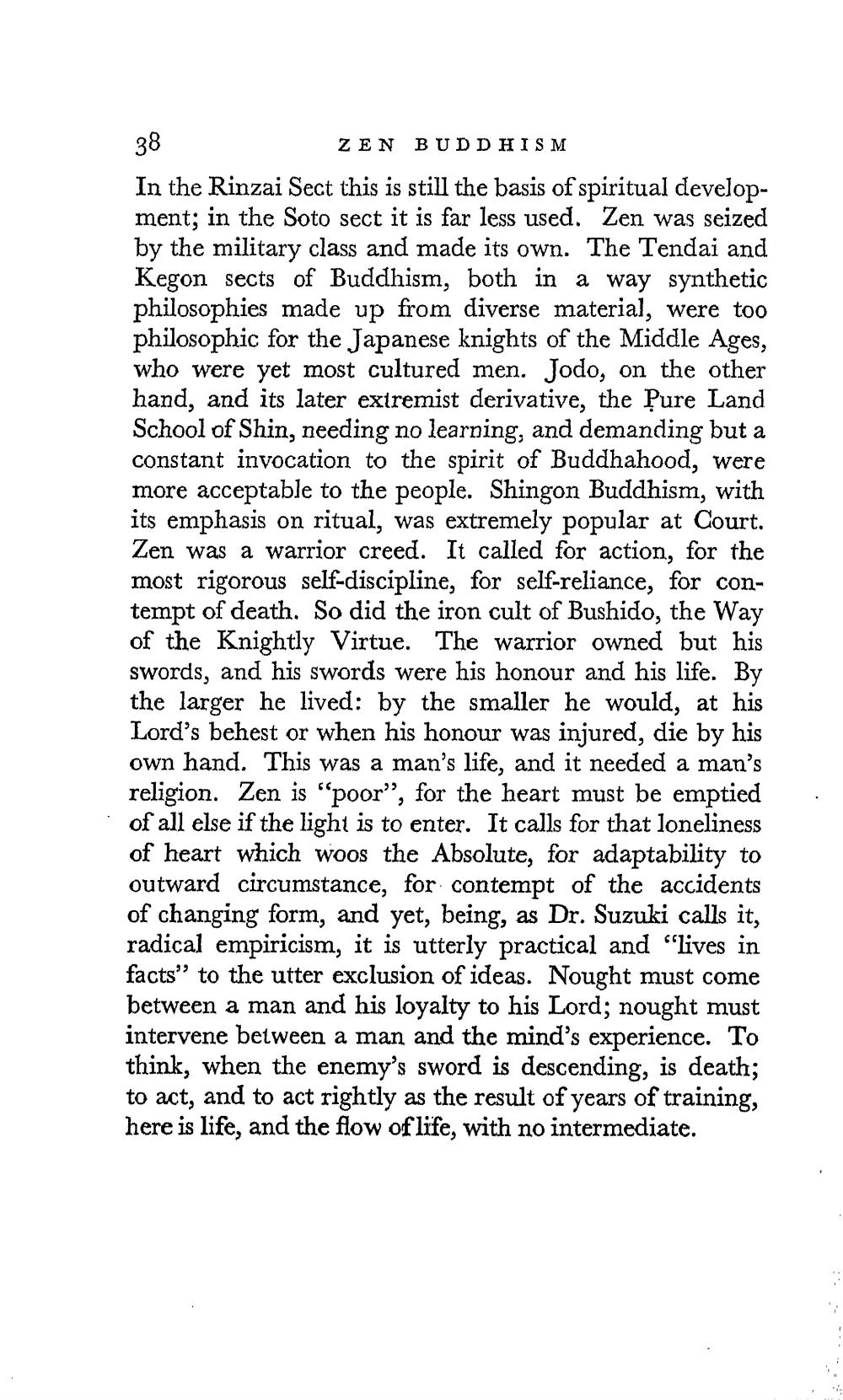________________
38
ZEN BUDDHISM In the Rinzai Sect this is still the basis of spiritual development; in the Soto sect it is far less used. Zen was seized by the military class and made its own. The Tendai and Kegon sects of Buddhism, both in a way synthetic philosophies made up from diverse material, were too philosophic for the Japanese knights of the Middle Ages, who were yet most cultured men. Jodo, on the other hand, and its later extremist derivative, the Pure Land School of Shin, needing no learning, and demanding but a constant invocation to the spirit of Buddhahood, were more acceptable to the people. Shingon Buddhism, with its emphasis on ritual, was extremely popular at Court. Zen was a warrior creed. It called for action, for the most rigorous self-discipline, for self-reliance, for contempt of death. So did the iron cult of Bushido, the Way of the Knightly Virtue. The warrior owned but his swords, and his swords were his honour and his life. By the larger he lived: by the smaller he would, at his Lord's behest or when his honour was injured, die by his own hand. This was a man's life, and it needed a man's religion. Zen is "poor”, for the heart must be emptied of all else if the light is to enter. It calls for that loneliness of heart which woos the Absolute, for adaptability to outward circumstance, for contempt of the accidents of changing form, and yet, being, as Dr. Suzuki calls it, radical empiricism, it is utterly practical and "lives in facts” to the utter exclusion of ideas. Nought must come between a man and his loyalty to his Lord; nought must intervene between a man and the mind's experience. To think, when the enemy's sword is descending, is death; to act, and to act rightly as the result of years of training, here is life, and the flow of life, with no intermediate.




